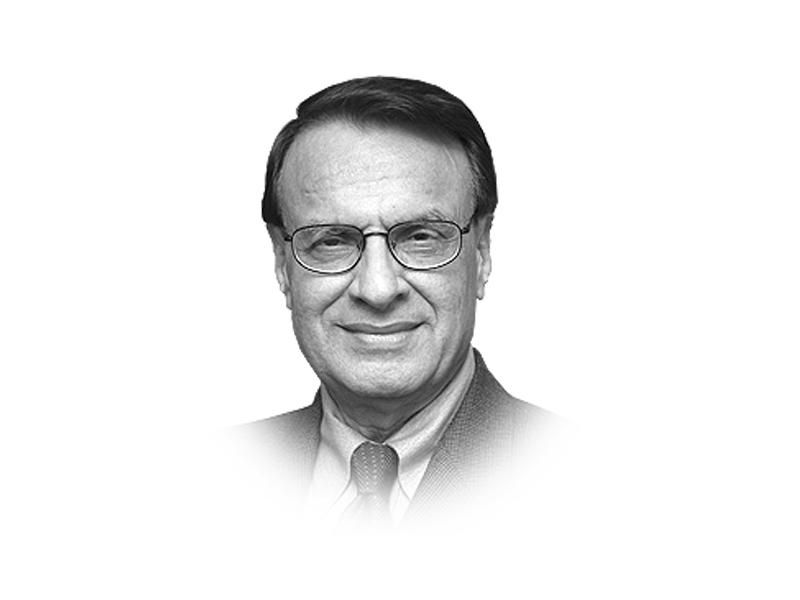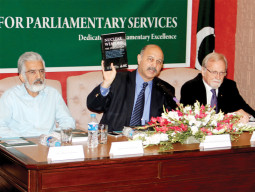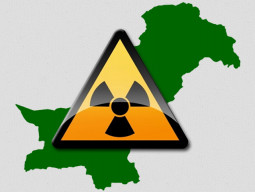
No wonder, the world today witnesses an erosion of arms control and disarmament measures, violation of treaty obligations and weakening of UN disarmament institutions. The non-proliferation agenda is being followed in an arbitrary and discriminatory manner with scant commitment to the overarching goal of “general and complete disarmament” as envisaged in Article VI of the Nuclear Non-Proliferation Treaty (NPT). The situation has been aggravated by the burgeoning arms trade and country-specific discriminatory supply of nuclear fuel and technology by some of the major nuclear powers.
It is in this dismal backdrop that an international crisis over Iran’s nuclear programme has been brewing for more than a decade now. The West, led by the US, harbours grave reservations about the avowed peaceful nature of Iran’s nuclear programme, accusing it of not reporting some of its nuclear facilities to the IAEA as required under its obligation as a signatory to the NPT. Iran, for its part, denies these allegations and insists that its entire nuclear activity has been consistent with its NPT obligations and that its nuclear programme is for peaceful purposes alone. It also considers uranium enrichment as its right as defined by the Non-Proliferation Treaty.
The Iranian nuclear crisis is not a sudden eruption. It is now in its 11th year. Iran has a fairly developed nuclear infrastructure which it has built over years. Its known key facilities include a power plant at Bushehr, a uranium conversion facility at Isfahan, another enrichment plant at Natanz and a heavy water plant at Arak. Until this crisis began in the summer of 2002, questions were being raised only about the Russian-Iranian nuclear cooperation and the resultant development of the Bushehr light water nuclear reactor complex. Natanz and Arak nuclear sites are now the focus of the current crisis.
IAEA’s regulations prescribe breach when a nuclear reaction actually takes place in a given facility. Since Iran had not engaged in the alleged nuclear activity by the time its infrastructure in question was detected, technically it could not be found in breach of its Treaty obligations, even though it could be faulted for having been politically remiss. In October 2007, IAEA chief El Baradie had reportedly confirmed that the inspections of Iranian installations found no evidence of Iran developing nuclear weapons.
In its historical perspective, it is a crisis of choice, not necessity. Initially, the US was not even ready to talk to Iran and instead deputed its three EU partners, France, Germany and Great Britain, to engage Tehran with a demand for cessation of its enrichment activity. The stand-off continued even after several rounds of negotiations and punitive resolutions of the UN Security Council since February 2006 calling on Iran to halt its nuclear work. Until President Barrack Obama came on the scene, the EU troika never seriously tried to explore a non-confrontational course of action towards Iran.
Pursuant to Obama’s new policy of direct talks with Iran, it was in October 2009 that a structured dialogue between Iran and the P-5+1 (US, Russia, China, UK, France and Germany) was held in Geneva. While the West’s key demand remained for Iran to suspend uranium enrichment, Iran maintained that its uranium-enrichment and nuclear research activities for peaceful purposes were lawful and within its right under Article IV of the NPT, and thus irreversible. Even in that deadlock, the Geneva talks did seem to have provided an opening for diplomacy between the two sides
Since then, further discussions were held, first in Baghdad in May 2012 and then in Almaty in February 2013, on the modalities of an arrangement that could end this decade-long crisis. There have also been other developments with salutary effect on the engagement process. President Hassan Rouhani’s victory in the June 15 election this year came as a big ‘game-changer’. Tehran now shows a new outlook altogether seeking to alleviate the West’s concerns about Iran’s nuclear activities in order to get relief from the sanctions that have crippled its economy.
In late September, Rouhani’s telephone call to President Obama, the first-ever contact at this level since 1979, provided a new momentum to the efforts for an end to the crisis. President Obama welcomed what he described as a “unique opportunity to make progress with the new leadership in Tehran”. The talks between the P-5+1 and Iran started in Geneva earlier this month remained inconclusive. Based on direct talks between Iran and the US prior to Geneva, Washington seemed to have sensed Tehran’s anxiety to come to terms with the minimum requisite benchmarks to be able to have sanctions lifted.
No wonder, Tehran has been receiving encouraging signals from the US and Europe on Iran’s right to uranium enrichment under certain conditions. On their part, the Iranian officials also have shown willingness to negotiate on some of the fundamental aspects of Iran’s nuclear programme, including a lower level of enrichment and other measures needed to establish the peaceful nature of its nuclear programme in return for lifting of sanctions and acceptance of its right to enrichment under the NPT. But at the same time, President Rouhani and Supreme Leader Ayatollah Khamenei have both described Iran’s nuclear rights under the NPT as an irrevocable ‘red line’.
It now remains to be seen if diplomacy on both sides will meet each other’s concerns without crossing this ‘red line’. It is a slippery canvas on which the two sides are seeking to write an interim deal with their minimal benchmarks already drawn on it. At the time of writing of these lines, the final round of the talks that began in Geneva on November 20 amid growing expectations that an interim agreement could finally be within reach after 10 years of on-off negotiations is still in progress. No matter how close the two sides to a deal may be, given the invisibles at play in this case, they remain far apart in their ultimate goals and objectives.
Published in The Express Tribune, November 23rd, 2013.
Like Opinion & Editorial on Facebook, follow @ETOpEd on Twitter to receive all updates on all our daily pieces.
COMMENTS (12)
Comments are moderated and generally will be posted if they are on-topic and not abusive.
For more information, please see our Comments FAQ


































1713853507-0/MalalaHilary-(2)1713853507-0-270x192.webp)








@piddler, The bombing of Hiroshima and Nagasaki was carried out with 20KT weapons and resulted I over 220000 killed directly and many more thousands through leukemia and other related problems to say nothing of the collateral damage. Fusion bombs are obviously many times more lethal. Atomic bomb is more than a weapon. It is a psychological weapon too. Small nations of Europe have decided not to have them, Argentina and South Afruca abandoned these weapons. I disagree that5 to 20 KT weapons are limited use. These weapons can instill fear in the minds of the opponents. @Rex monitor, I was expressing my opinion just like the author or anybody else. Iran wants the bomb because a. It wants to terrorise Israel, b. It wants to counter Saudi Arabia who seem to have an agreement with Pakistan to provide it if not with an actual bomb, a nuclear umbrella. They have an Air Force that can deliver the weapons. I still hold firm that Iran must not be allowed to have a NW. Otherwise, not only the US but Pakistan will also regret it. The world equations change very quickly. Today's friend can be an enemy tomorrow.
@MSS: I don't think atomic bombs matter anymore. With 5 to 20 KT range they have very limited capabilities. A hydrogen bomb defines a super power -with 30 mega tons only 8 are needed to make British into a big ditch. Now put all the discussion in prospective.
If there is anything worst than Greeks bearing gifts its an American retreating. They will set fire to the whole region just for kicks.
@MSS: An who are you sir to decide who should or should not have the nuclear weapons. All those countries who have the industry with nuclear scirnce, are in a position to make a bomb and there are many in the world.!! Only they are the one to decide whether they Must or Must not have the beast. And incidently no one cares about them, with the exception of IRAN and North Korea beause of geo political reasons. ..............
Rex Minor
For their entire lives, the remain a stooge of the western powers. Because of these civil-military bureaucrats, Pakistan is in the current mess. After retirement, they become Hajji, give sermons to the government, complain about inequalities in the world, and their love for the weak and the poor. Nice try Shamsoo, but its too late!
Regarding this article, it is poorly written. May be a bit outdated. And of course, nothing new.
Iran or any large country (other than the existing 8) must NOT have nuclear weapons. Period. The strategic calculus of the world powers dictates that small conflicts can be managed using conventional force if needed. But a large theocratic state with NW is dangerous for every body. Today, Pakistan supports Iran because Pakistan hates the US. Tomorrow, if Iran has NW and Pakistan has a dispute with Iran then Pakistan will regret its flawed position as at present. Pakistani NW are a pride of Pakistanis but a big headache for others especially when looking at its internal vulnerabilities. Do we really want another large theocratic state to have their finger on the trigger and push the world into a nuclear crisis that may end in a holocaust that the likes of Ahmedinejad have been denying? Iran does not need nuclear power for another 200 years.
@alamgir Non-Westerners is too broad. Asians such as the Chinese, Korean and Japanese may have legitimate historical grievances, but that does not impede those nations from having good relations with the West, unlike the Middle-Eastern and South-Asian countries. The East-Asians are practical: although they harbor deep resentment to what other cultures have done to them, they say that if they indulge in self-pity, they will never be able to improve their lot in this world. The Middle Eastern culture however, -and the Islamic cultures in general - is acutely concerned with righting perceived wrongs. For Muslims and Arabs it is more important to "correct" past wrongs than to think about how to improve one's situation. And despite that, millions of Muslims have a temporary lapse of memory, when they flock to the West as immigrants in the millions. Your Samuel Huntington quote simply does not quite add up.
@Toticalling: Are you sure that Iran does not have the bomb? We have watched this game of power play with North Korea. This is the replay and the Americans are now ready to blink, and Iran will most probably offer to allow the participation and involvement of foreign experts in handling the stocks of enriched uranium by converting into fuel in Iran? This should alleviate the concerns of those who would prefer such an operation being undertaken ouside Iran.
Rex Minor
@Toticalling: Would like to appreciate your sane comment. You are bang on when you posit that a lot of the American heartache with Iran stems from their mishandling during the Shah's regime. I would also like to add that a theocratic state is something that goes against their grain, but you may then ask about Saudi Arabia and I can only say that it is not theocractic but a monarchy. We also have to realize that nations act in bizarre ways for their self interest.
I agree with you about Israel. One fact we have to bear in mind is that Israel and Palestine were always the backwaters of a Moslem empire. Whenever a Muslim conqueror took over Jerusalem, it was made into a foot-note of history and no one bothered about it. No one cared for the Palestinians until the Jews started setting up Zion. Even today, there is no viable leader to be found in that area. If Jordan is able to set up perhaps one of the first democracies in the ME, I suspect Jordan may revert to its ownership of Palestine as it was before Israel.
I am of the opinion, nuclear arsenal should be limited to as few countries as possible. We know why this animosity with USA started. I am sure ordinary Americans remember the storming of their Embassy and the humiliation of the captives by Iranian revolutionaries, the same people who are still in power now. I would also imagine they remember past presidents announcing death to America and also today, when the new president seems very peaceful, the crowd around him shout death to America. Roheni is more moderate. That is true, but his views about destruction of Israel have not changed. Israel as a country in 1948 was morally wrong But now those people born and living there have a right to remain there. That is the reason why most of western countries are scared with nuclear armed Iran. Iran should show more flexibility.
"The West won the world not by the superiority of its ideas or values or religion-but rather by its superiority in applying organized violence. Westerners often forget this fact; non-Westerners never do.”(Samuel Huntington)